Buddhist institutions and sacred sites across Asia, 500–1300 CE
Between the 6th and 13th centuries CE, Buddhist institutions and sacred sites across Asia flourished as centers of learning, ritual, and cultural exchange. This period marked the height of transregional Buddhism, with monumental sites like Nālandā, Borobudur, and Bagan serving as hubs of intellectual and spiritual activity. These institutions not only preserved and disseminated Buddhist teachings but also fostered artistic innovation, architectural grandeur, and cross-cultural connections that shaped the religious landscape of Asia. In this post, we explore the development of these key centers, highlighting their roles in monastic education, pilgrimage networks, and doctrinal transmission.

Mingalazedi temple, Bagan, Myanmar. Bagan is an ancient city located in the Mandalay region of Myanmar. It was the capital of the Bagan Kingdom from the 9th to the 13th centuries and is known for its thousands of Buddhist temples, stupas, and monasteries. The Bagan Archaeological Zone is a UNESCO World Heritage Site and is considered one of the richest archaeological sites in Asia. The temples are renowned for their unique architecture, intricate carvings, and stunning frescoes. Source: Wikimedia Commonsꜛ (license: CC BY-SA 3.0)
Introduction
Between the 6th and 13th centuries CE, Buddhist institutions and sacred sites across Asia experienced a phase of unparalleled development. This period witnessed the consolidation of monastic education, the expansion of pilgrimage infrastructure, and the flowering of Buddhist architecture on a transregional scale. Institutions such as Nālandā, Borobudur, and Bagan served not only as centers of ritual and learning but also as hubs of international transmission linking the Indian subcontinent with Southeast Asia, Tibet, and beyond.
The period’s key centers stand out for their scale, archaeological preservation, and sustained roles in doctrinal dissemination, manuscript production, and artistic innovation. Other sites, including Dunhuang in China and Sukhothai in Thailand, though not treated in detail here, reflect similarly significant developments. This institutional efflorescence drew on earlier foundations laid by figures like Ashoka in the 3rd century BCE and shaped the religious landscape of later centuries across much of Asia.
While each site was shaped by local conditions and dynastic politics, the shared characteristics of Buddhist institutions across this period — monumental design, textual tradition, royal sponsorship, and doctrinal adaptability — point to a coherent but diverse Buddhist ecumene. The overview that follows situates these centers within their regional and transregional contexts to better understand the scale and structure of Buddhism’s institutional presence during this formative era.
Ashoka and the first institutionalization of Buddhism
The reign of Emperor Ashoka (c. 268–232 BCE) represents a foundational moment in the institutional history of Buddhism. Following his military conquest of Kalinga and subsequent personal transformation, Ashoka adopted and promoted Buddhism as a state-supported ethical system. His patronage of the saṅgha and investment in religious infrastructure helped convert Buddhism from a regional renunciant tradition into a pan-Indian moral and political framework.

Traditional depiction of the Maurya Empire under Ashoka as a solid mass of Maurya-controlled territory, c. 250 BCE. Source: Wikimedia Commonsꜛ (license: CC BY-SA 3.0)
Ashoka’s contribution to Buddhist infrastructure was unprecedented in scale and geographic reach. According to textual and epigraphic evidence, he commissioned the construction of thousands of stupas and monasteries across the subcontinent, including key sites such as Sanchi, Sarnath, and Bodhgayā. These sites often featured stone railings, pillars, and early symbolic reliefs that established visual and spatial forms later elaborated by monumental Buddhist centers. His promotion of pilgrimage routes and local shrines contributed to the sacralization of geographic space in Buddhist terms.
Equally significant were Ashoka’s inscribed edicts, written in Prakrit and engraved on rocks and pillars across his empire. These edicts advocated for ethical conduct, religious tolerance, non-violence, and respect for the saṅgha. Although not doctrinal in a strict sense, they reflect an early attempt to use political instruments to support moral reform grounded in Buddhist values. The edicts also provide direct evidence of the state’s engagement in the institutional spread of Buddhism and remain critical archaeological artifacts.


Left: Example inscription on the Minor Pillar Edict on the Sarnath pillar of Ashoka, 3rd century BCE. The edict is written in Prakrit, using the Brahmi script, and is one of the earliest known inscriptions of Ashoka. The edicts usually proclaim Ashoka’s conversion to Buddhism and his commitment to the welfare of his subjects, before common themes of dhamma and moral conduct. Source: Wikimedia Commonsꜛ (license: CC BY-SA 2.0) – Right: Distribution of Ashoka’s edicts. Source: Wikimedia Commonsꜛ (license: CC BY-SA 3.0)
Ashoka’s policies and material investments laid the groundwork for the development of Buddhist institutions in later centuries. Many of the physical, administrative, and symbolic patterns established during his reign — such as the linkage between royalty and the saṅgha, the use of architecture for doctrinal messaging, and the promotion of Buddhist ethics as public policy — would persist and evolve in the centuries that followed.
Key centers of learning and power
The following sections provide an overview of several key centers of Buddhist learning and power that emerged between the 6th and 13th centuries CE. Each site reflects unique regional adaptations, architectural styles, and doctrinal emphases while contributing
Nālandā and Vikramaśīla (India)
Nālandā and Vikramaśīla represent the apex of institutional Buddhist education and scholasticism in the Indian subcontinent during the first half of the considered period. Both were established in northeastern India: Nālandā likely as early as the 5th century CE under Gupta patronage, and Vikramaśīla in the 8th or 9th century CE under the Pāla dynasty. These universities functioned as centers for advanced philosophical training, monastic discipline, and international intellectual exchange.

Archaeological site of Nālandā, Bihar, India. Source: Wikimedia Commonsꜛ (license: CC BY-SA 4.0)
Nālandā developed into a multi-monastery complex with extensive residential, educational, and devotional infrastructure. It maintained a vast curriculum encompassing Buddhist canonical texts (Tripiṭaka), logic (hetuvidyā), grammar, epistemology, and non-Buddhist systems of thought. Its Dharmaganja library and associated scriptoria made it a key site for the reproduction and transmission of manuscripts. Archaeological excavations reveal a planned layout of monastic blocks and temples, attesting to its institutional complexity and sustained patronage.

Conjectural Reconstruction of Temple No. 3, Nālandā University, c. 6th century CE. Source: Wikimedia Commonsꜛ (license: public domain)
Vikramaśīla was conceived as a scholastic complement to Nālandā, with a more pronounced emphasis on Vajrayāna teachings. It featured a central shrine, numerous monastic cells, and administrative structures. It was also renowned for its debate culture, the systematization of Tantric curricula, and its role in training influential scholars like Atiśa, who played a major role in the transmission of Indian Buddhism to Tibet.
Together, Nālandā and Vikramaśīla illustrate how Buddhist monastic education evolved into a highly organized and state-supported network of knowledge production. Their influence extended well beyond India, shaping the intellectual development of Buddhist traditions across Central, East, and Southeast Asia.
Srivijaya and Muara Jambi (Sumatra)
The Srivijaya maritime empire, which flourished from the 7th to the 13th century CE in present-day Sumatra, was a major center of Mahāyāna and Vajrayāna Buddhism in maritime Southeast Asia. Functioning as a commercial and religious hub, Srivijaya exerted influence across the Malay Archipelago and maintained diplomatic and educational links with major Indian Buddhist institutions, particularly Nālandā. Chinese and Tibetan sources, as well as the 7th-century Chinese pilgrim I-Tsing, attest to the presence of a vibrant monastic and scholastic community in Srivijaya, where monks studied Buddhist scriptures, Sanskrit, and ritual practices before continuing their journeys to the Indian subcontinent.
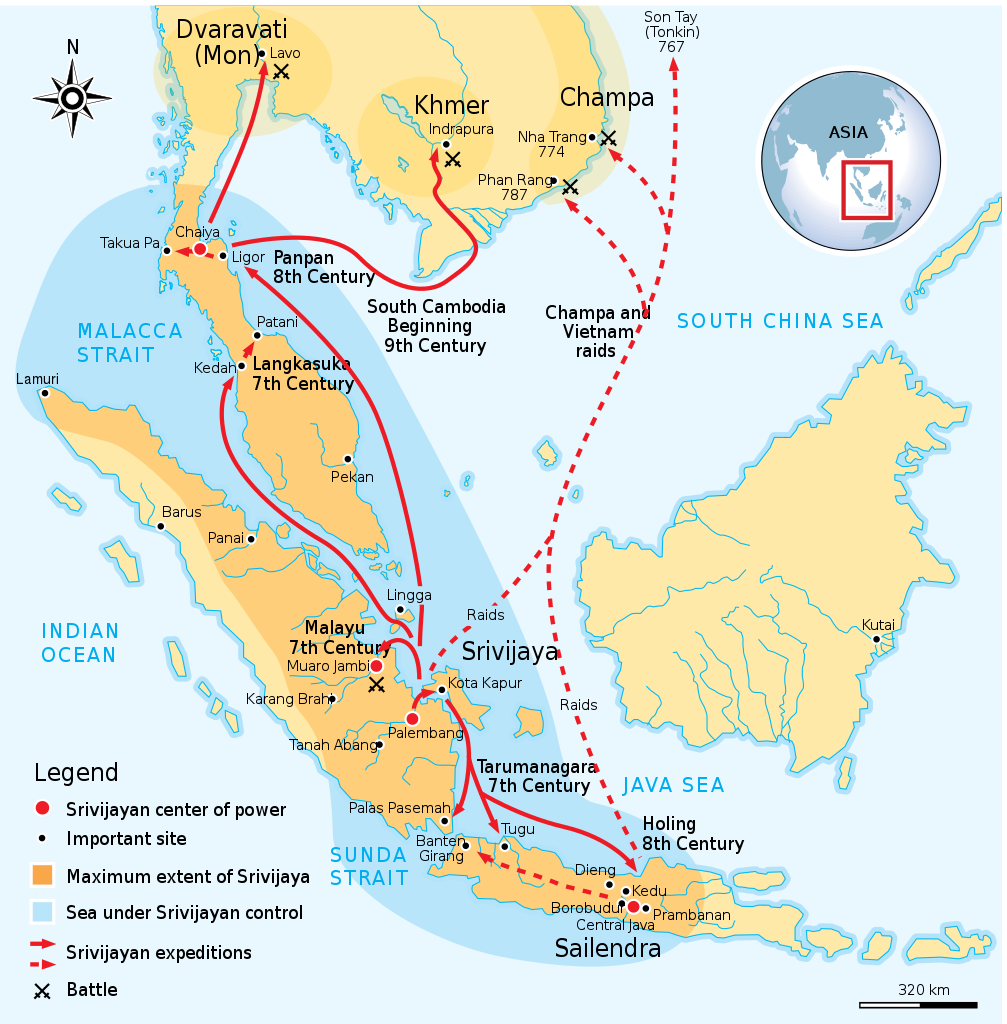
The maximum extent of Srivijaya around the 8th to the 11th century with a series of Srivijayan expeditions and conquest. Source: Wikimedia Commonsꜛ (license: CC BY-SA 3.0)
The archaeological site of Muara Jambi, located near the modern city of Jambi on Sumatra’s eastern coast, is thought to be one of Srivijaya’s principal religious centers. Excavations at Muara Jambi have revealed an extensive complex of brick temples (candi), monastic structures, and artifact caches, suggesting long-term monastic residence and ritual activity. Although the site has only been partially excavated, it provides material evidence of Srivijaya’s institutional religious life and its sustained engagement in the transregional Buddhist world.

Candi Gumpung, a Buddhist temple at Muaro Jambi of Malayu Kingdom. Source: Wikimedia Commonsꜛ (license: CC BY-SA 2.0)
Srivijaya played a key intermediary role in the transmission of Buddhism from South Asia to East and Southeast Asia. It contributed to the diffusion of Mahāyāna and Vajrayāna teachings to Java, Cambodia, and beyond, influencing architectural styles, iconography, and scriptural interpretation. As both a political and religious entity, Srivijaya exemplified the integration of Buddhist learning into statecraft, commerce, and regional diplomacy during the high medieval period of Asian Buddhism.
Borobudur (Java)
Borobudur, located in Central Java and constructed during the 8th and 9th centuries CE under the Sailendra dynasty, is the largest Buddhist monument in the world and one of the most significant archaeological achievements in Southeast Asia. Although it does not appear to have functioned as a monastic university like Nālandā or the Srivijaya maritime empire, Borobudur served a major ritual and cosmological function that embodied core Mahāyāna and Vajrayāna teachings through its architectural and sculptural program.

Borobudur viewed from the northwest. Source: Wikimedia Commonsꜛ (license: CC BY-SA 3.0).
The structure is a stepped pyramid with nine stacked platforms — six square and three circular — topped by a central dome. The entire design replicates a three-dimensional mandala, guiding pilgrims in a clockwise circumambulation from the base to the summit, which symbolizes a journey from the world of desire (kāmadhātu) through form (rūpadhātu) to formlessness (arūpadhātu). This spatial progression is deeply tied to Buddhist cosmology and the path to awakening.
Along the walls of the lower levels are over 2,600 intricately carved relief panels that depict narratives from the life of the Buddha, Jātaka tales, and doctrinal illustrations such as the Lalitavistara and Avataṃsaka sūtras. These panels were not merely decorative but served as a pedagogical medium, guiding practitioners through visualized instruction and moral reflection. The higher circular terraces are adorned with 72 perforated stupas, each containing a seated Buddha, encircling the central stūpa which remains empty — possibly symbolizing śūnyatā (emptiness).
Borobudur reflects strong Indian influence, particularly from Gupta-era aesthetics, but it also demonstrates regional adaptation in both iconography and construction techniques. Its location in a volcanic basin and alignment with surrounding peaks suggests a complex integration of geomancy and sacred landscape.

Borobudur temple, Java, Indonesia. In front, Buddhist monks performing pradakṣiṇā (circumambulation) around the stūpa. The temple is a UNESCO World Heritage Site and one of the largest Buddhist monuments in the world. It was built in the 8th and 9th centuries CE during the reign of the Sailendra dynasty. The temple is designed as a three-dimensional mandala, symbolizing the path to enlightenment. The stūpa at the top represents the ultimate goal of Buddhist practice, while the lower levels depict various stages of spiritual development. Source: Wikimedia Commonsꜛ (license: CC BY-SA 4.0)
While its original ritual use is still debated, Borobudur likely functioned as a pilgrimage site for both lay and monastic communities engaged in esoteric practice. It stands today as a testament to the integration of architecture, narrative, and ritual in Mahāyāna-Vajrayāna Buddhism and continues to inform our understanding of religious life and artistic expression in early medieval Southeast Asia.
Anurādhapura (Sri Lanka)
Anurādhapura, the ancient capital of Sri Lanka from the 4th century BCE to the 11th century CE, was one of the most enduring and influential centers of Theravāda Buddhism in South Asia. As both a political and religious center, it became the primary locus of Buddhist institutional life on the island, housing expansive monastic complexes, royal patronage networks, and major architectural innovations.
Archaeological remains at Anurādhapura include large-scale stupas such as the Ruwanwelisaya, Jetavanārāma, and Abhayagiri, which were among the tallest structures of their time and demonstrate advanced engineering and symbolic design. The city also contained multiple monasteries, forest hermitages, image houses, and a sophisticated hydraulic infrastructure, illustrating the integration of religious, economic, and technological systems.

The Ruwanweli Maha Seya, also known as the Maha Thupa (lit. ’the Great Stupa’), in Anuradhapura, Sri Lanka, was built by Sinhalese King Dutugemunu in c. 140 BCE, who became king of Sri Lanka. It is said that two quarts of the historical Buddha’s relics are enshrined in this stupa, making it the largest collection of his relics anywhere. Source: Wikimedia Commonsꜛ (license: CC BY-SA 4.0)
Anurādhapura played a central role in the consolidation of the Theravāda canon and the development of scholastic and ritual practices that would later be transmitted to mainland Southeast Asia. The Mahāvihāra, in particular, was a key center of orthodoxy and scriptural preservation. Monks from Sri Lanka were active in missionary work abroad, and Anurādhapura received pilgrims and students from across the Buddhist world.
The city’s monastic institutions influenced the formation of religious centers in regions such as Myanmar, Thailand, and Cambodia, particularly in the early phases of Theravāda expansion. In this sense, Anurādhapura not only preserved Indian traditions but also acted as a radiating force in the regional transformation of Buddhism. Its continuity, monumental architecture, and textual legacy position it as a foundational node in the transregional Buddhist network of the first millennium CE.
Bagan (Myanmar)
Bagan, located on the banks of the Irrawaddy River in central Myanmar, rose to prominence between the 9th and 13th centuries CE and became one of the most significant centers of Theravāda Buddhism in mainland Southeast Asia. By the 11th century, under the reign of King Anawrahta (r. 1044–1077), Bagan emerged as a political and religious capital, supporting a dense urban landscape filled with thousands of stupas, temples, and monastic institutions.

Dhammayangyi (Dhammayan) Temple, the largest of all the temples in Bagan, Myanmar. Today, the temple is a UNESCO World Heritage Site. Source: Wikimedia Commonsꜛ (license: CC BY-SA 4.0)
Bagan’s transformation into a world center of Theravāda Buddhism was driven by both state sponsorship and transregional religious exchanges. Anawrahta’s adoption of Theravāda Buddhism, reportedly under the influence of Sri Lankan monastic emissaries, marked a decisive moment in the religious orientation of the kingdom. The royal court initiated large-scale temple construction projects, standardization of Buddhist scripture, and land endowments to monasteries. Inscriptions from this period record donations, monastic regulations, and doctrinal affirmations, offering invaluable insight into the relationship between kingship and the saṅgha.
Architecturally, Bagan is notable for the variety and sophistication of its religious buildings. These include massive brick stupas, image houses, and hall-temple hybrids that combine Indian, Sri Lankan, and regional styles. Frescoes, carved plaques, and terracotta reliefs reflect themes from the Jātakas and canonical texts, highlighting the visual transmission of Buddhist narratives. Noteworthy monuments such as Ananda Temple, Shwezigon Pagoda, and Thatbyinnyu Temple illustrate a high level of artistic and engineering achievement.
Bagan also developed into a textual and scholastic hub. Manuscript copying and script development flourished, and links with Sri Lanka were strengthened through exchanges of monks and scripture. The emphasis on scriptural orthodoxy, supported by both local and foreign monastic networks, positioned Bagan as a cornerstone in the broader consolidation of Theravāda Buddhism across Southeast Asia.
Although Bagan’s influence waned following Mongol invasions and political fragmentation in the late 13th century, its monumental legacy and inscriptional record continue to offer a window into a formative era of Buddhist institutional and cultural development in the region.
Polonnaruwa (Sri Lanka)
Polonnaruwa succeeded Anurādhapura as the capital of Sri Lanka in the 11th century CE and continued the island’s role as a major center of Theravāda Buddhist scholarship, state-sponsored monasticism, and regional religious influence. This shift followed the Chola invasions, which destabilized Anurādhapura and prompted a political and institutional reconfiguration in the southern part of the island.
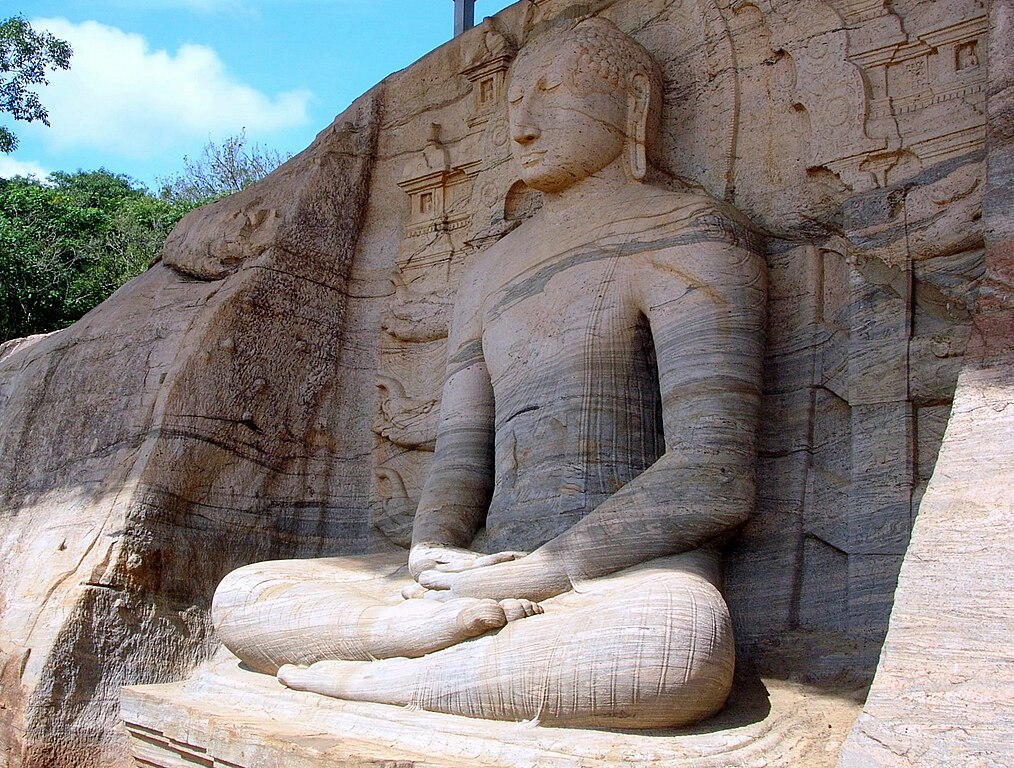
Carved seated Buddha, Gal Viharaya, Polonnaruwa, Sri Lanka. As a monumental evidence of the artistic and devotional ideals of the era, this sculpture exemplifies the aesthetic maturity of Polonnaruwa’s sculptural tradition. Source: Wikimedia Commonsꜛ (license: CC BY-SA 2.5)
During its peak in the 11th to 13th centuries, Polonnaruwa became a focal point for the revival of the Mahāvihāra tradition, supported by kings such as Vijayabāhu I and Parākramabāhu I. These rulers invested heavily in the restoration and expansion of Buddhist institutions, promoting doctrinal orthodoxy and reforming the saṅgha. Parākramabāhu’s 12th-century monastic reform is particularly noteworthy for its standardization of monastic rules, emphasis on Vinaya discipline, and administrative centralization of the monastic order.
Architecturally, Polonnaruwa features a concentration of monastic structures, colossal Buddha statues, and specialized buildings such as chapter houses and preaching halls. The Gal Vihāra rock temple and the Lankatilaka image house exemplify the aesthetic refinement and devotional grandeur of this period. These constructions reflect both continuity with Anurādhapura and innovations suited to the new political and ritual context.
Polonnaruwa also maintained close religious and diplomatic ties with Bagan, Myanmar, especially under King Parākramabāhu. These exchanges facilitated the circulation of scriptures, relics, and ordained personnel, reinforcing a pan-regional Theravāda identity that would endure long after Polonnaruwa’s political decline. In this respect, Polonnaruwa served as both a custodian of Sri Lanka’s Theravāda heritage and a transregional mediator in the broader Buddhist world of the 11th–13th centuries CE.
Angkor (Cambodia)
Angkor, the capital of the Khmer Empire from the 9th to the 15th centuries CE, was a major center of religious transformation in mainland Southeast Asia. Originally a stronghold of Hindu state religion and temple construction, Angkor underwent a significant religious shift between the 11th and 13th centuries as Mahāyāna and later Theravāda Buddhism gained prominence in courtly and popular religious life.
This transition is most visibly reflected in the architecture and iconography of Angkor’s religious monuments. Temples such as the Bayon and Preah Khan, initially dedicated to Mahāyāna Buddhist figures like Avalokiteśvara, were built under the patronage of King Jayavarman VII (r. c. 1181–1218), who was himself a devout Buddhist. These structures retained the formal and symbolic layout of earlier Hindu temples but were reoriented toward Buddhist cosmology and devotional practice. They represent a distinctive fusion of Indic religious forms, Khmer artistic idioms, and royal statecraft.
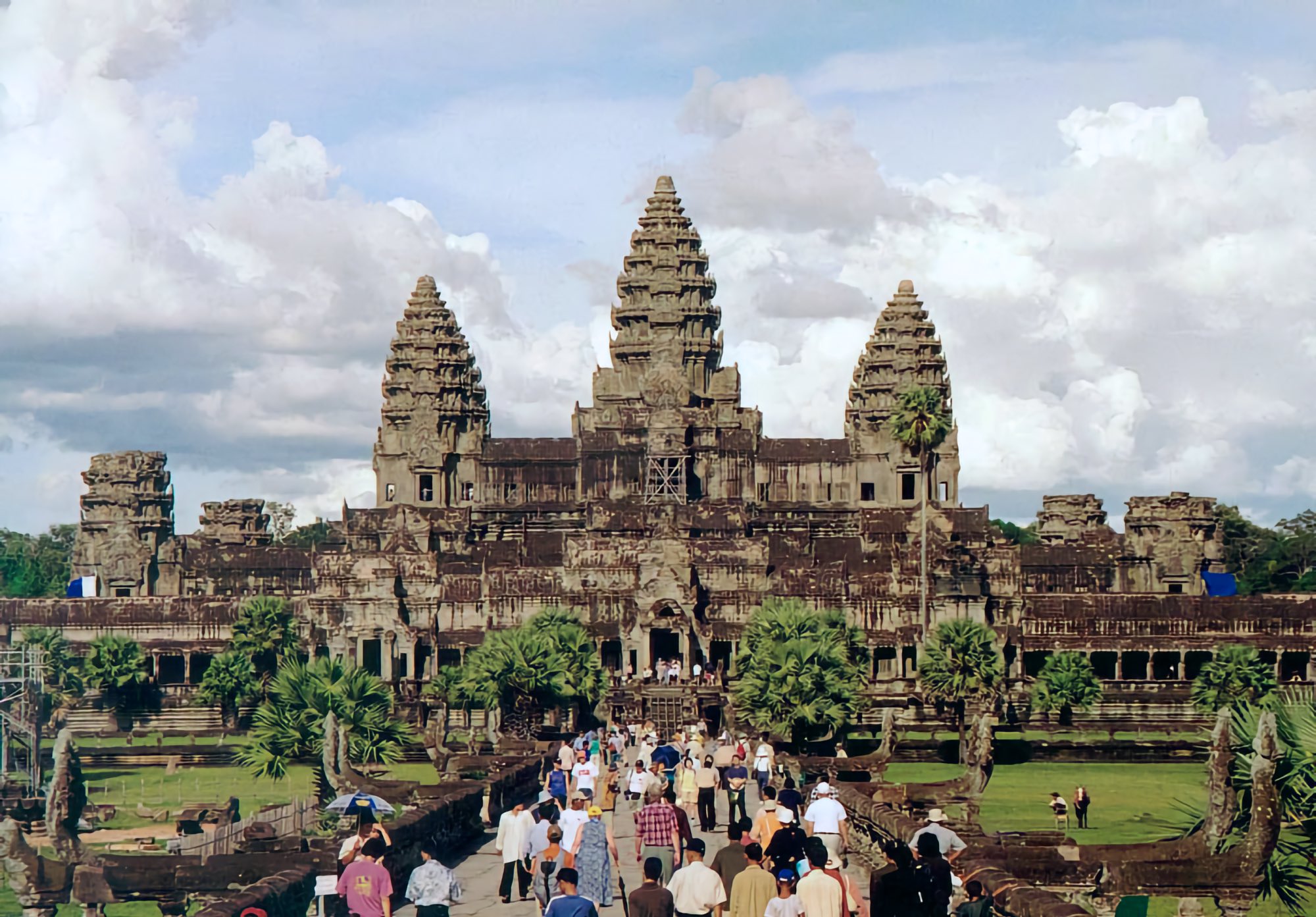
Angkor Wat complex, Cambodia. Source: Wikimedia Commonsꜛ (license: CC BY-SA 3.0) (modified)
Jayavarman VII’s reign also marked a period of intensified monastic patronage, including the construction of hundreds of temples, rest houses, and hospital chapels across the Khmer empire. The king’s identification with the Bodhisattva ideal further embedded Buddhist ethics into political ideology. However, by the 14th century, Angkor experienced a shift toward Theravāda Buddhism, which would become dominant in Cambodia and throughout much of mainland Southeast Asia.
Although Angkor did not function as a formal center of Buddhist scholasticism akin to Nālandā or Polonnaruwa, it played a central role in the localization of Mahāyāna and later Theravāda traditions within a powerful imperial setting. Its hybrid religious architecture and evolving iconographic programs provide critical archaeological evidence of doctrinal transition and royal sponsorship. As such, Angkor occupies a unique position in the regional diffusion and transformation of Buddhist institutional and artistic life during the high medieval period.
Samye and Sakya (Tibet)
The emergence of Samye and Sakya as major centers of Buddhist learning in Tibet during the 8th to 13th centuries CE marked the institutional consolidation of Indian Buddhism on the Tibetan plateau. Both sites played a critical role in adapting, preserving, and systematizing scholastic traditions inherited from Indian monastic universities, particularly Nālandā and Vikramaśīla.
Samye Monastery, established in the late 8th century under the patronage of King Trisong Detsen, was the first Buddhist monastery in Tibet. Designed according to a cosmological mandala plan, its layout symbolized the Buddhist universe and reflected influences from both Indian and Chinese architectural and doctrinal sources. Samye became the primary site for ordaining monks in accordance with the Mūlasarvāstivāda Vinaya and for translating Indian texts into Tibetan. It also hosted significant debates, such as the famous 8th-century Samye Debate, which shaped the direction of Tibetan Buddhist philosophy.
 Central building of the Samye Monastery, Tibet. Source: Wikimedia Commonsꜛ (license: CC BY-SA 2.0)
Central building of the Samye Monastery, Tibet. Source: Wikimedia Commonsꜛ (license: CC BY-SA 2.0)
Sakya Monastery rose to prominence in the 11th–13th centuries as the principal seat of the Sakya school of Tibetan Buddhism. It became a hub for textual transmission and scholastic commentary, particularly under figures such as Sakya Paṇḍita and Drogön Chögyal Phagpa. The monastery’s scriptoria were instrumental in preserving Indian treatises on logic, tantra, and philosophy that had disappeared elsewhere. Sakya’s political prominence increased when it gained Mongol patronage and became a governing authority under Yuan rule.

Sakya monastery, Tibet. Source: Wikimedia Commonsꜛ (license: CC BY-SA 3.0)
Together, Samye and Sakya demonstrate how Tibetan monasticism absorbed and institutionalized Indian scholastic traditions while developing its own interpretive frameworks. These sites underscore Tibet’s role as a critical heir to Indian Buddhism after the decline of its institutions in the subcontinent and as a transmitter of Buddhist knowledge to Inner Asia and beyond.
Shared patterns and divergent legacies
The sites discussed, while shaped by diverse regional histories, patronage structures, and doctrinal emphases, share a number of common institutional and architectural patterns. Despite regional differences in language, politics, and artistic tradition, Buddhist institutions across Asia between 500 and 1300 CE demonstrate a striking convergence in educational structure, transregional connectivity, architectural form, doctrinal plurality, and adaptive resilience. These shared characteristics underline the simultaneous localization and integration of Buddhist monastic and scholastic systems across the continent.
Educational models
Across the Buddhist world between 500 and 1300 CE, a broad spectrum of educational models developed in response to doctrinal, political, and cultural demands. Nālandā and Vikramaśīla exemplified highly formalized university-style institutions with structured curricula, teacher hierarchies, and scriptoria that served both local and international communities. In Tibet, Samye and Sakya adapted Indian scholastic frameworks into new cultural settings while emphasizing textual transmission and commentary. Sites like Polonnaruwa and Bagan, while not universities in the strict sense, functioned as temple-monastic complexes where doctrinal authority and ritual orthodoxy were cultivated through state-supported monastic reform. Even predominantly ritual or pilgrimage-oriented centers such as Borobudur and Angkor provided immersive pedagogical experiences through architecture, spatial symbolism, and iconographic programs that encoded complex doctrinal content.
Transregional networks
Transregional networks of patronage, pilgrimage, and textual exchange formed the backbone of institutional Buddhism during this period. Royal support, demonstrated by rulers such as Ashoka, Anawrahta, and Jayavarman VII, not only legitimized local Buddhist institutions but also facilitated connections across kingdoms and linguistic boundaries. These rulers endowed monasteries, constructed temples, and actively promoted Buddhist ethics as part of state ideology, embedding religious infrastructure within political frameworks.
Pilgrimage routes crisscrossed the Indian Ocean, the Bay of Bengal, and overland corridors in the Himalayan and mainland Southeast Asian regions. Monks, scholars, and royal envoys traveled between major centers, such as Nālandā, Anurādhapura, Srivijaya, and Bagan, exchanging teachings, ritual practices, and relics. These movements sustained a common religious vocabulary while allowing regional variations to emerge.
Manuscript exchange and translation efforts were crucial in preserving and disseminating Buddhist texts. Tibetan monasteries translated a vast corpus of Indian philosophical and ritual literature, many of which would later disappear in India. In Sri Lanka and Southeast Asia, the Theravāda canon was copied, commented on, and distributed widely. These textual economies underpinned institutional longevity and enabled doctrinal coherence across otherwise distant and politically distinct Buddhist worlds.
Architectural developments
Architectural expression served as a powerful medium for encoding and disseminating Buddhist cosmology, doctrine, and political legitimacy across the Asian Buddhist world. From the mandalic geometry of Borobudur to the axial mandala-plan of Samye, spatial organization reflected cosmological principles and guided ritual movement, offering a three-dimensional model of the path to awakening. In many cases, architecture embodied sacred geography, such as in the alignment of monuments at Bagan or the geomantic placement of temples at Angkor, thereby integrating built form with landscape and metaphysical vision.
Monumentality was another shared feature, especially visible in the towering stupas of Anurādhapura, the colossal temple-mountain structures of Angkor, and the expansive temple fields of Bagan. These massive constructions asserted both spiritual aspiration and royal power, serving as enduring symbols of dynastic legitimacy and pious kingship. Such projects mobilized substantial economic, technological, and artistic resources, reinforcing the integration of Buddhist institutions into the political and economic life of their respective regions.
Despite these commonalities, local adaptations in materials, techniques, and iconographic programs produced distinct architectural vocabularies. Brick stupas in Myanmar, terracotta temples in Sumatra, laterite and sandstone complexes in Cambodia, and rock-cut sanctuaries in Sri Lanka and Tibet all reflect regional responses to doctrinal themes and environmental conditions. These forms highlight the interplay between transregional symbolism and local craftsmanship, demonstrating how architectural language was both standardized and diversified across Buddhist Asia.
Doctrinal shifts
The institutional centers reflect a dynamic doctrinal landscape. While Nālandā, Srivijaya, and Angkor were aligned with Mahāyāna or Vajrayāna traditions, sites like Anurādhapura, Polonnaruwa, and Bagan were pivotal in the articulation and expansion of Theravāda Buddhism. These doctrinal currents were not mutually exclusive; many sites, such as Samye and Sakya, integrated Tantric elements into scholastic frameworks, while Theravāda centers incorporated Mahāyāna imagery and ritual forms. The comparative study of these sites reveals a complex interplay of continuity and innovation in Buddhist thought.
Resilience and decline
Most of the institutions examined eventually faced decline due to a combination of military, political, and ideological shifts. Invasions by foreign powers, such as the Islamic incursions that led to the destruction of Nālandā and Vikramaśīla, abruptly disrupted centuries of institutional continuity in northern India. Similarly, changing patterns of royal patronage, as seen in the later histories of Srivijaya and Angkor, weakened monastic endowments and reduced state support for large-scale religious construction and education. Doctrinal transitions also played a role, with Mahāyāna and Vajrayāna institutions losing influence in some areas as Theravāda or localized religious forms gained ground.
Yet the intellectual and artistic legacies of these institutions proved remarkably resilient. Tibetan monastic systems preserved the scholastic traditions of Indian Buddhism well after their disappearance on the subcontinent, while Sri Lankan orthodoxy continued to shape Buddhist practice and identity across mainland Southeast Asia. Architectural models, such as the stūpa, temple-mountain, and mandalic layout, remained influential, and iconographic themes were adapted into new visual and ritual contexts. In this way, the core functions of these institutions — education, ethical transmission, and symbolic expression — were reconstituted in new cultural and political environments, attesting to the enduring adaptability of Buddhist institutional forms.
Conclusion
Between the 6th and 13th centuries CE, Buddhist institutions across Asia developed into a network of transregional religious, intellectual, and architectural centers. While shaped by local conditions and political dynamics, these institutions shared foundational features: monastic education, ritual practice, royal patronage, monumental architecture, and the preservation and dissemination of canonical texts. The comparative patterns across sites, whether in India, Sri Lanka, Southeast Asia, or Tibet, reveal a system of religious institutions that was simultaneously adaptable and deeply interconnected.
The legacy of these centers extended well beyond their period of greatest influence. Doctrinal systems, scholastic lineages, architectural motifs, and ritual traditions originating in these institutions continued to shape Buddhist communities across Asia. Tibetan scholasticism, Southeast Asian Theravāda reform, and modern pilgrimage practices all bear the imprint of this formative era. Moreover, many of these sites, such as Borobudur, Bagan, and Angkor, remain active as heritage sites and places of religious significance today.
Ongoing archaeological excavations and epigraphic research continue to shed light on the scale, diversity, and influence of these institutions. Future site-specific studies will refine our understanding of regional variations and transregional connections. These investigations will not only enrich the historical record but also offer insight into how religious institutions function within broader cultural, economic, and political systems.
References and further reading
- Dutt, Sukumar, Buddhist Monks and Monasteries of India: Their History and Contribution to Indian Culture, 1989, Motilal Banarsidass Publications, ISBN: 978-8120804982
- Scharfe, Hartmut, Education in Ancient India, 2002, Brill, ISBN: 978-9004125568
- Huntington, Susan L., The Art of Ancient India: Buddhist, Hindu, Jain, 1985, Weatherhill, ISBN: 978-0834801837
- Bechert, Heinz (ed.), When Did the Buddha Live? The Controversy on the Dating of the Historical Buddha, 1996, Sri Satguru Publications, ISBN: 978-8170304692
- Holt, John C., The Buddhist Visnu: Religious Transformation, Politics, and Culture, 2008, Motilal Banarsidass Publications, ISBN: 978-8120832695
- Hall, Kenneth R., Maritime Trade and State Development in Early Southeast Asia, 1985, University of Hawaii Press, ISBN: 978-0824808433
- Skilling, Peter, Buddhism and Buddhist Literature of South-East Asia, 2010, Reichert Verlag, ISBN: 978-3895001994
- Rupert Gethin, The Foundations Of Buddhism, 1998, Oxford University Press, ISBN: 9780192892232
- Strong, John S., The Legend and Cult of Upagupta: Sanskrit Buddhism in North India and Southeast Asia, 2024, Motilal Banarsidass Publishing House, ISBN: 978-9359034409
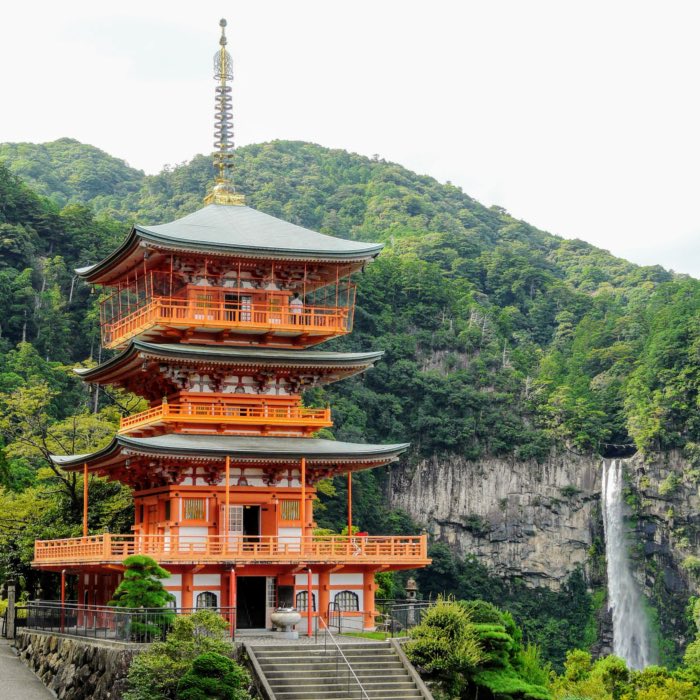
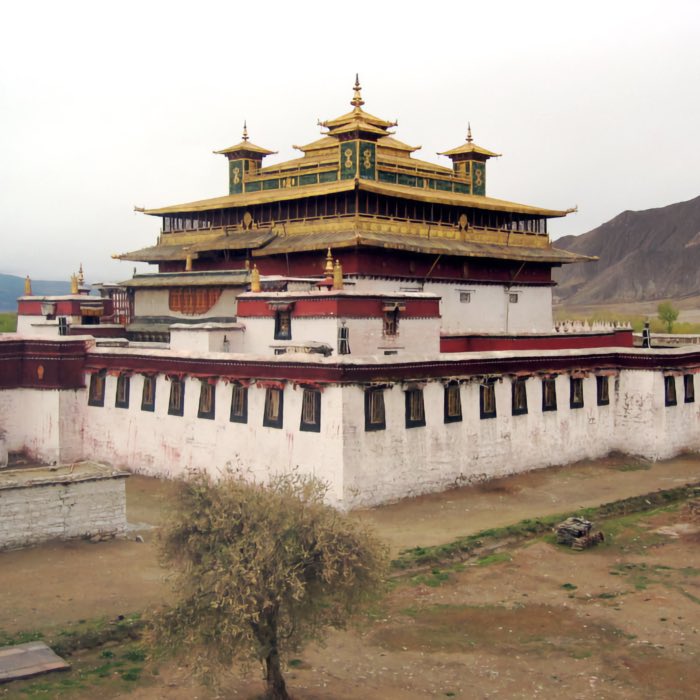
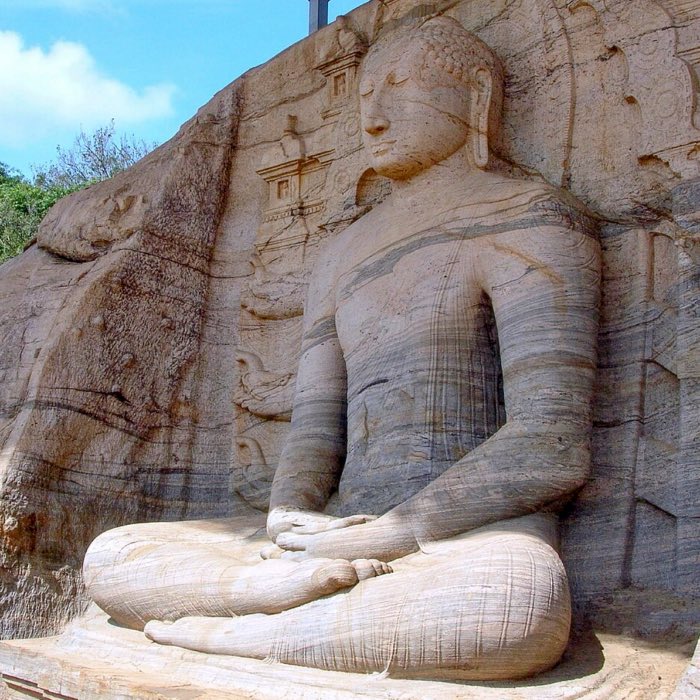
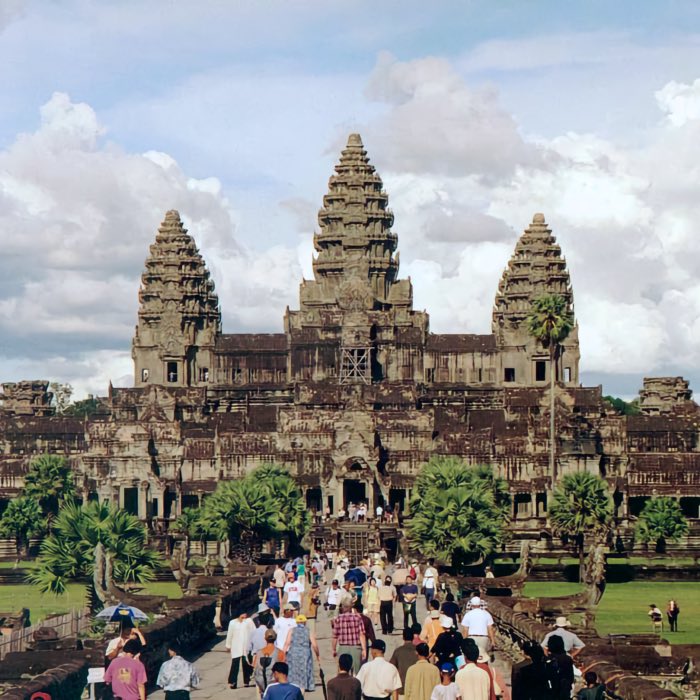
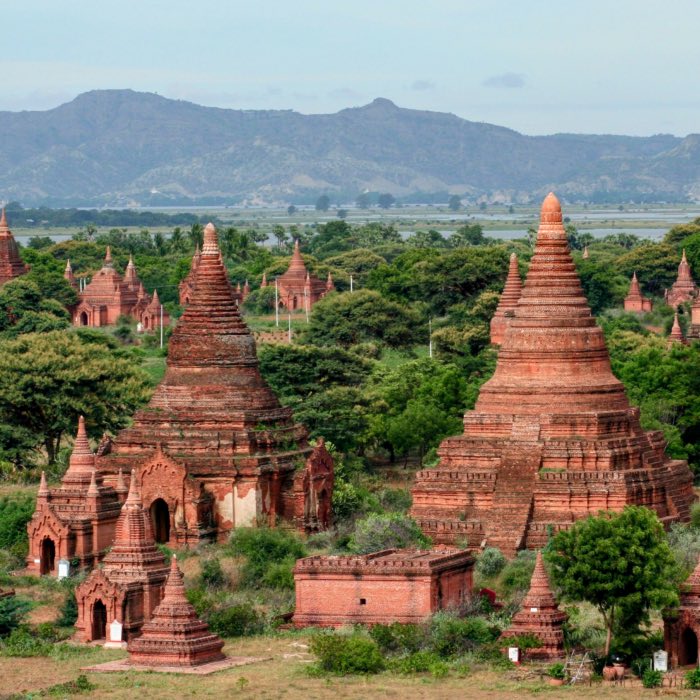
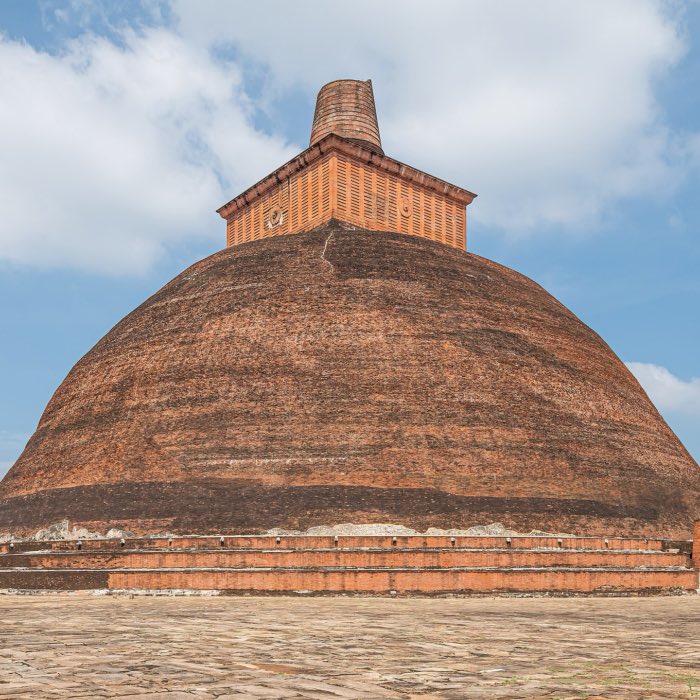
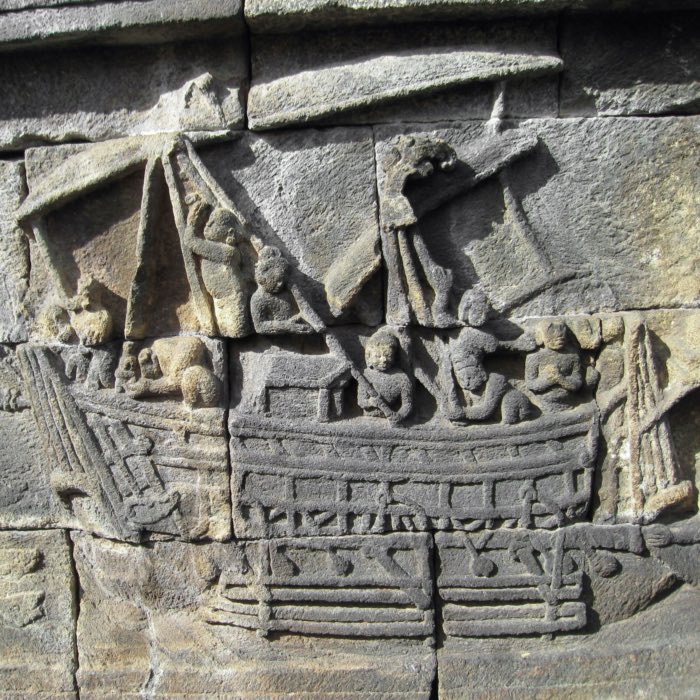
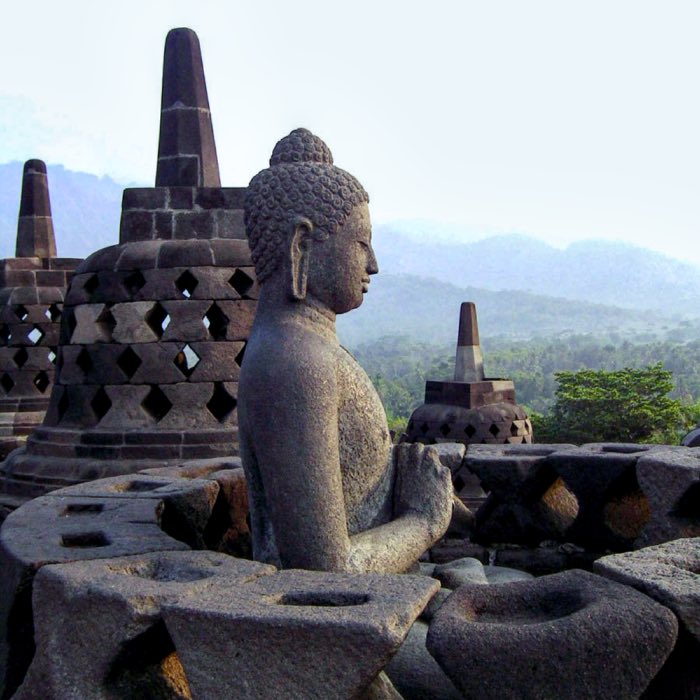
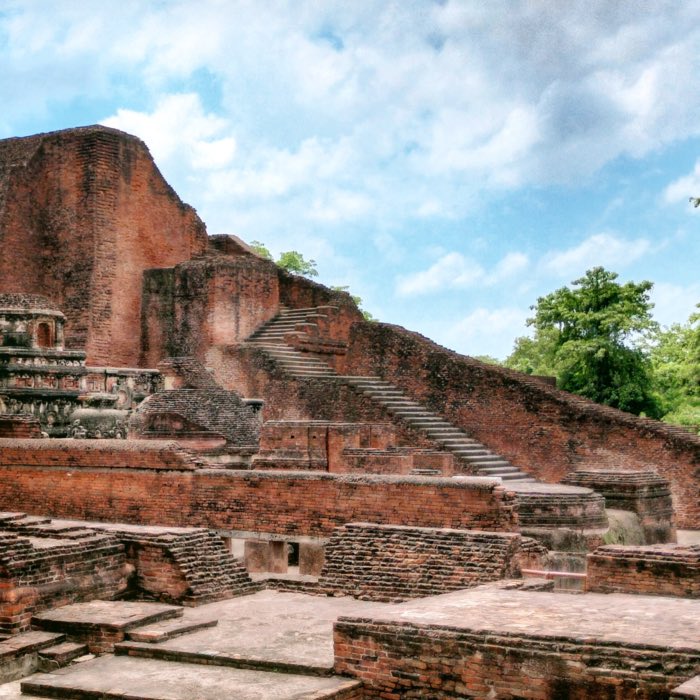
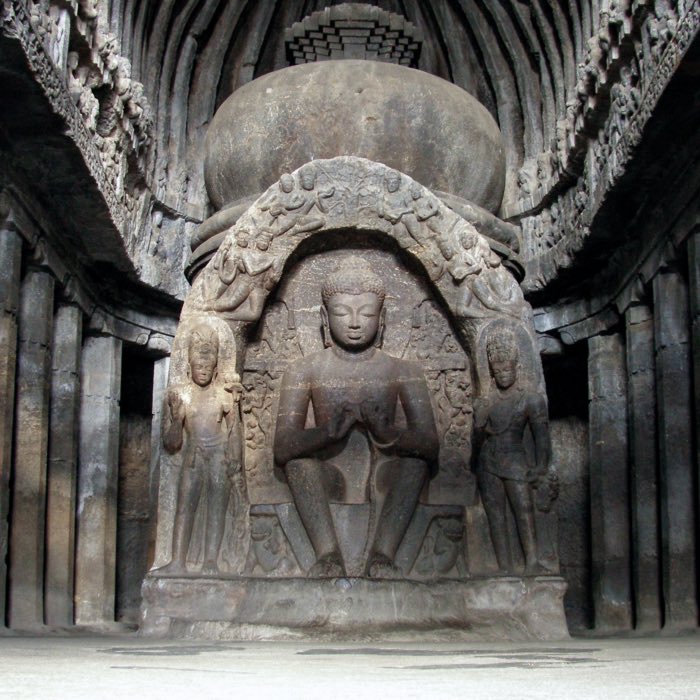
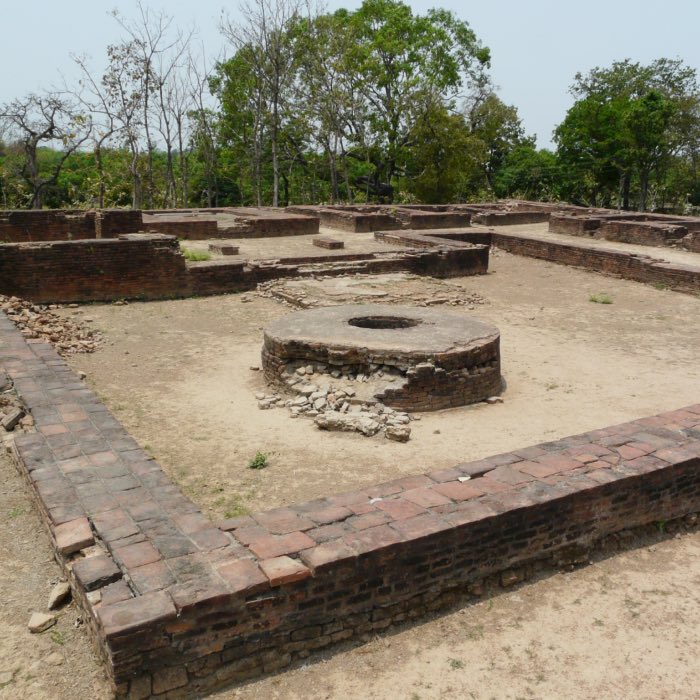
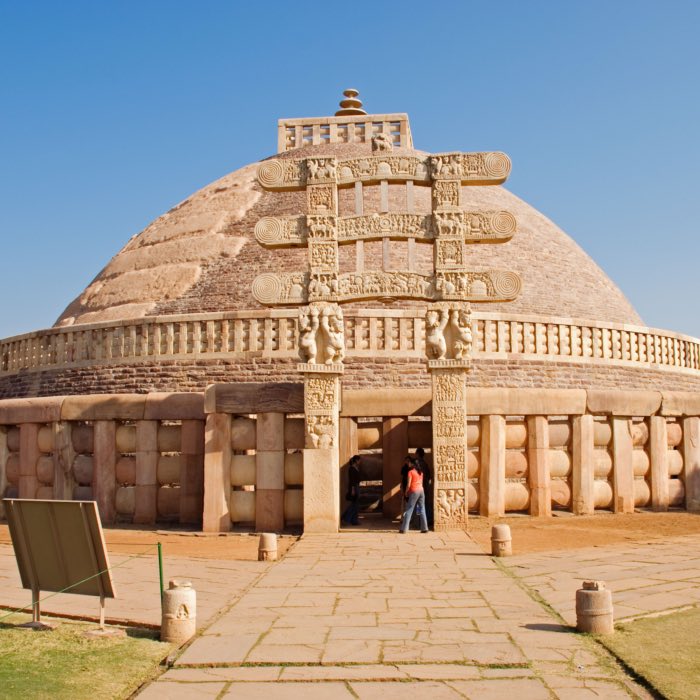
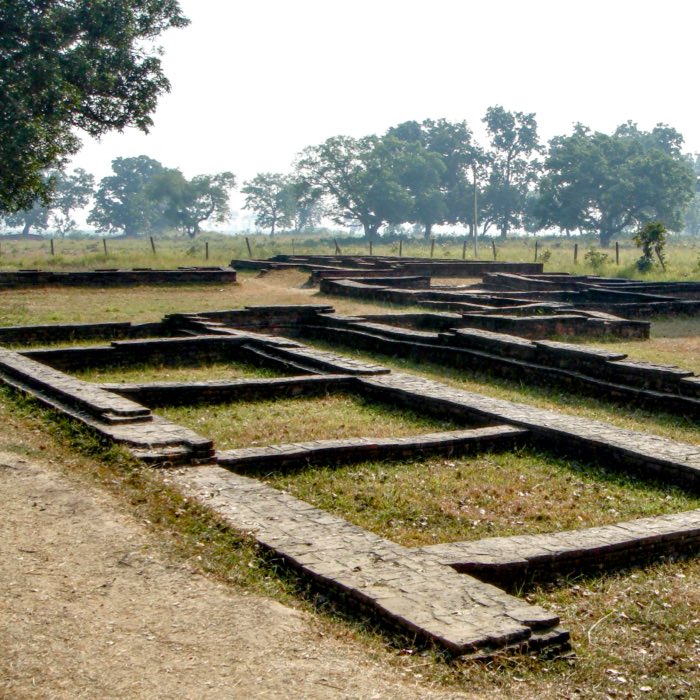
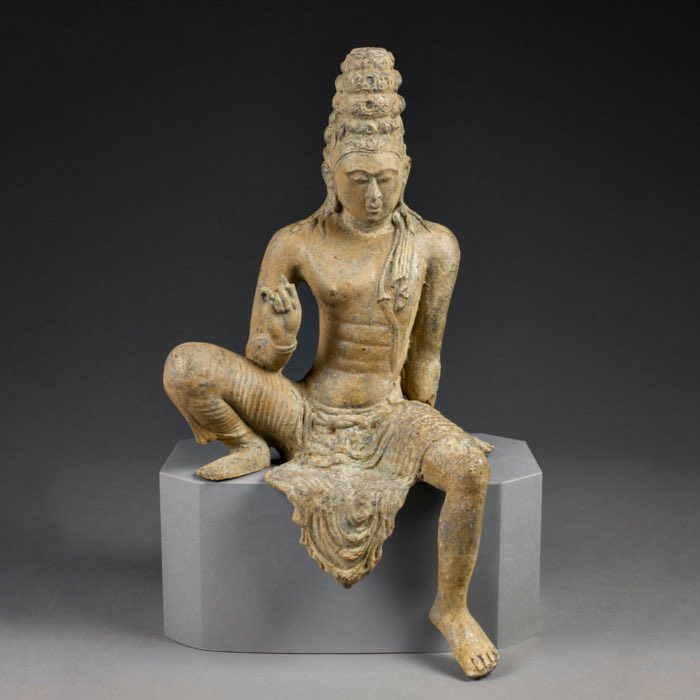
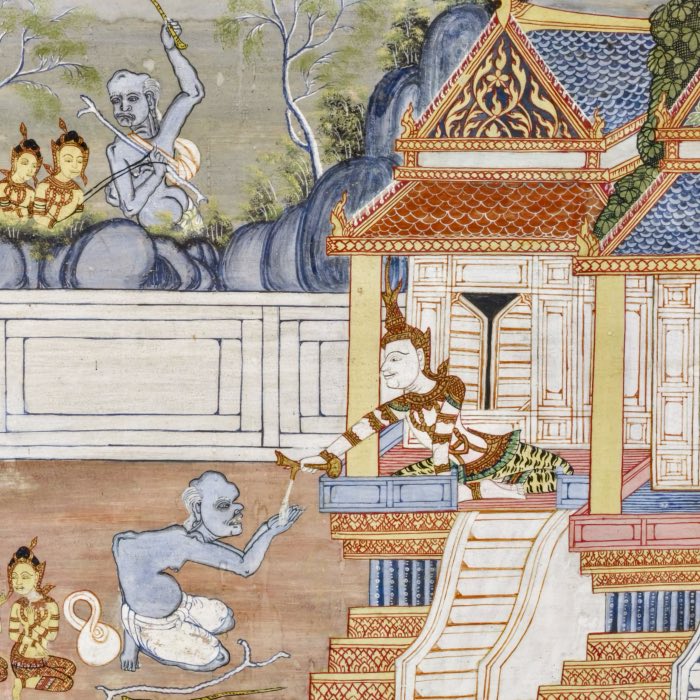
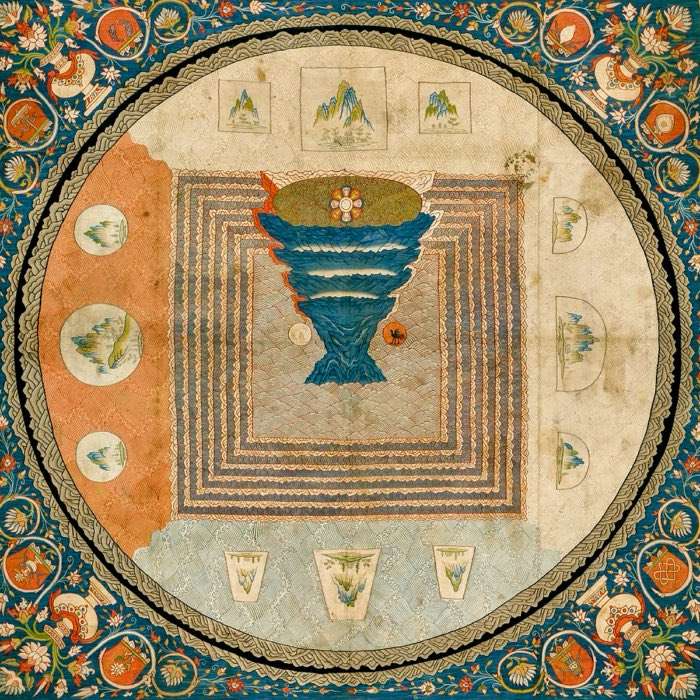
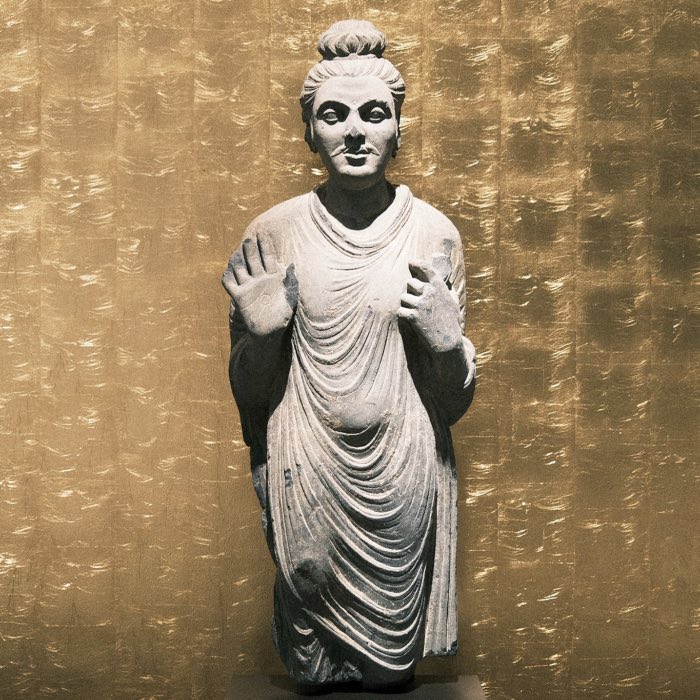
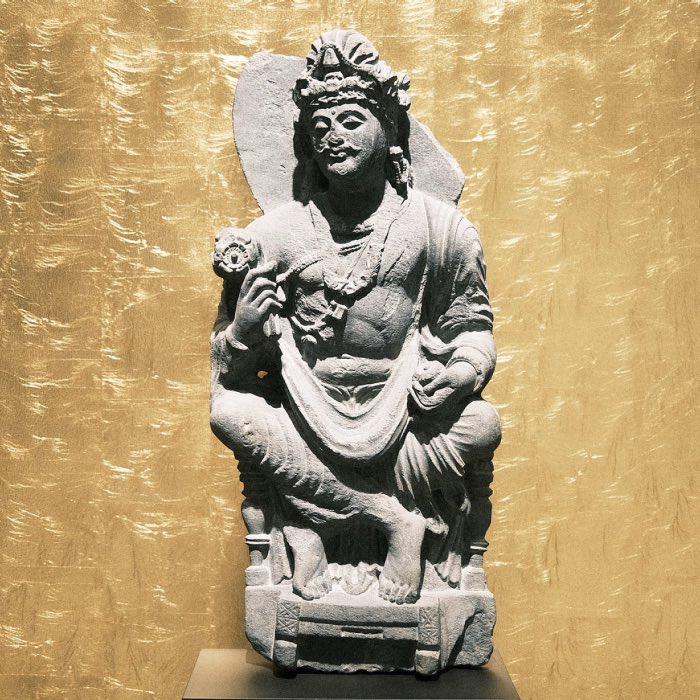
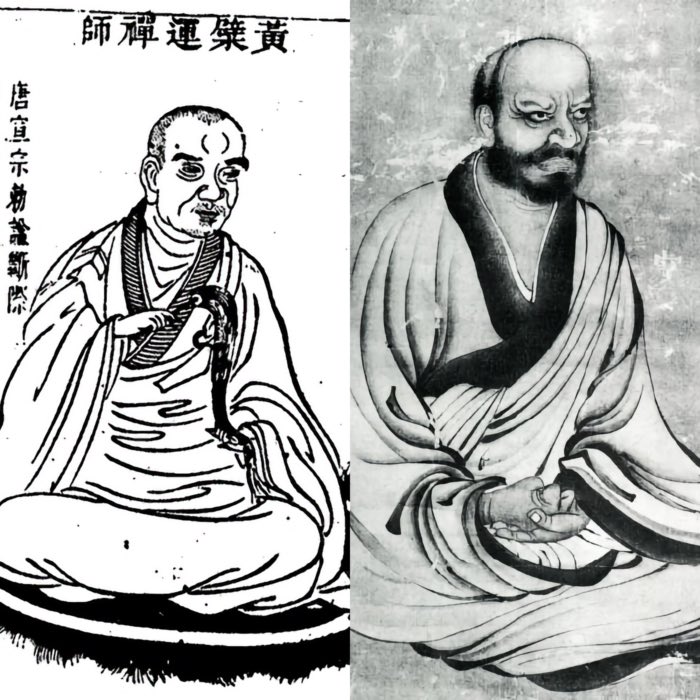

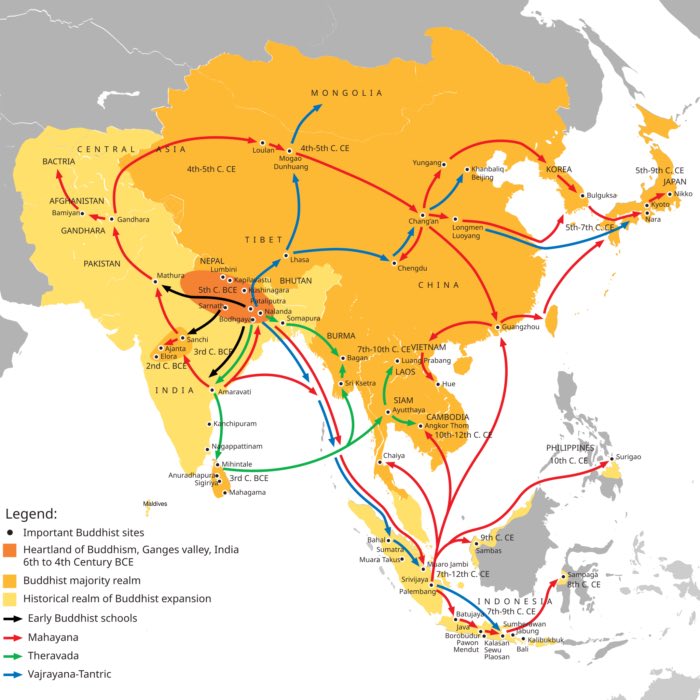
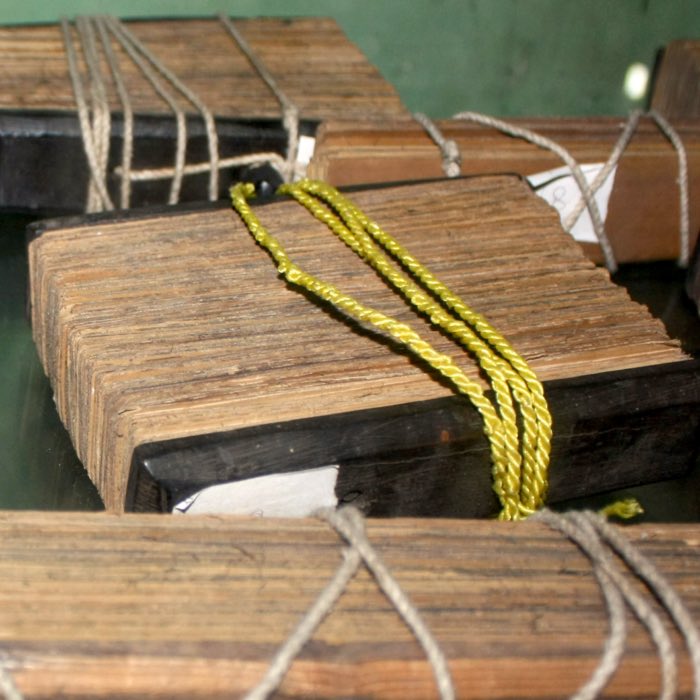
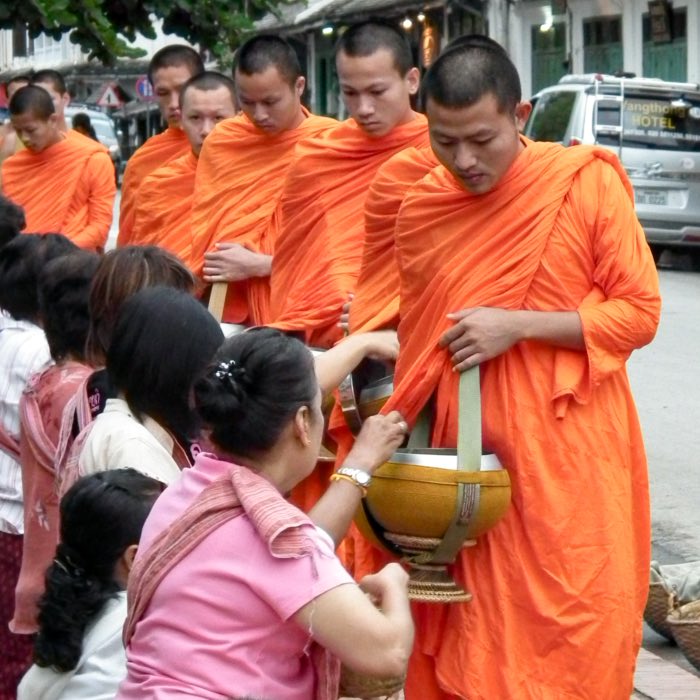
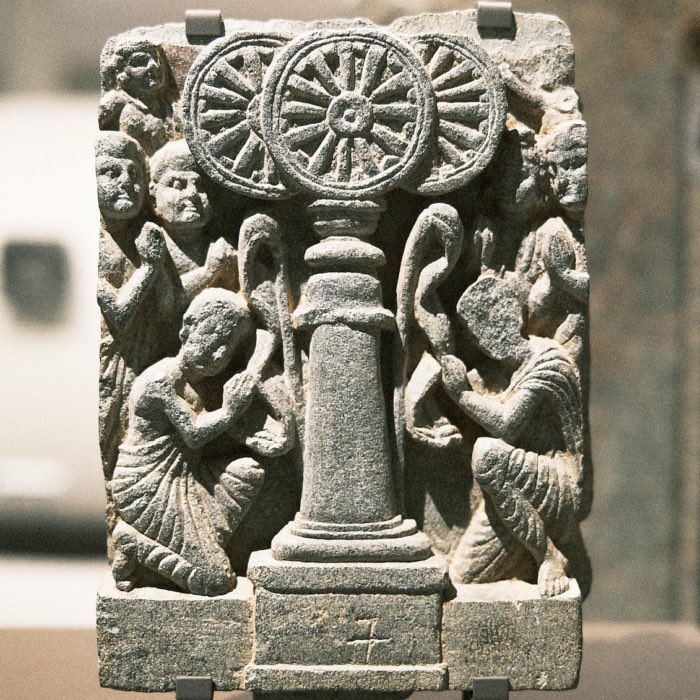
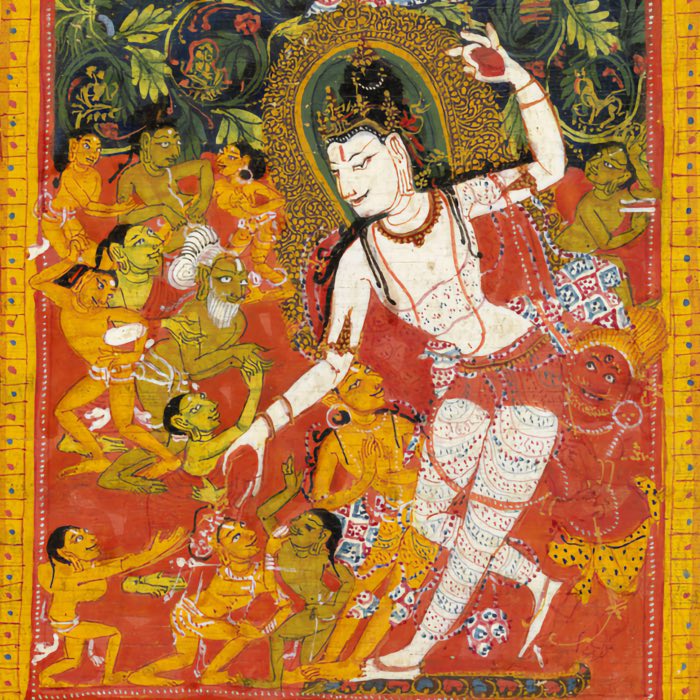
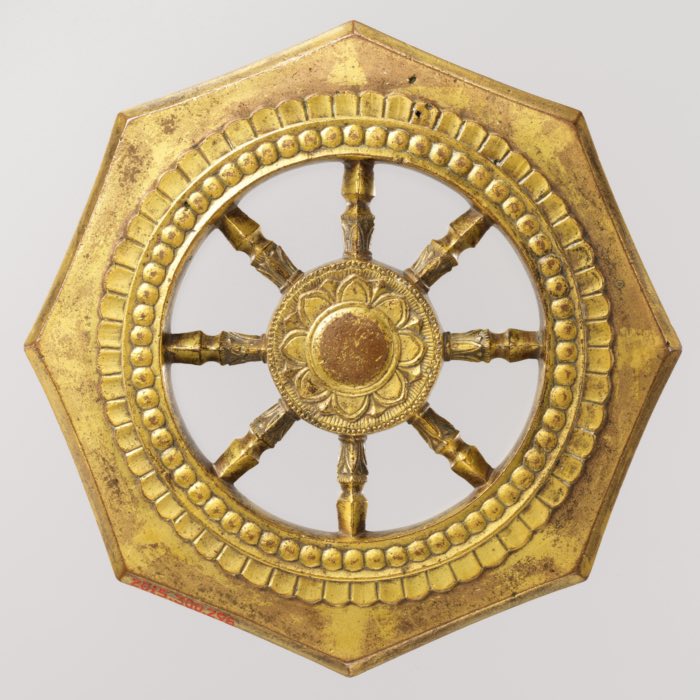
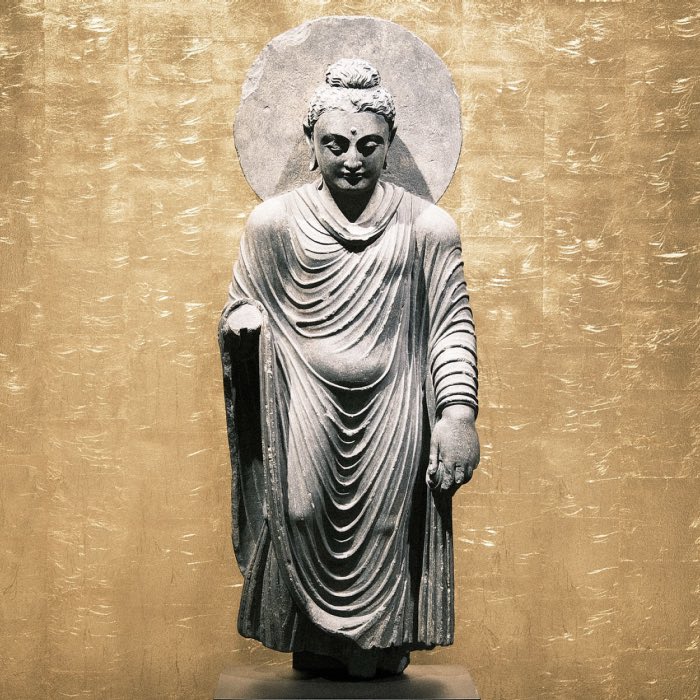
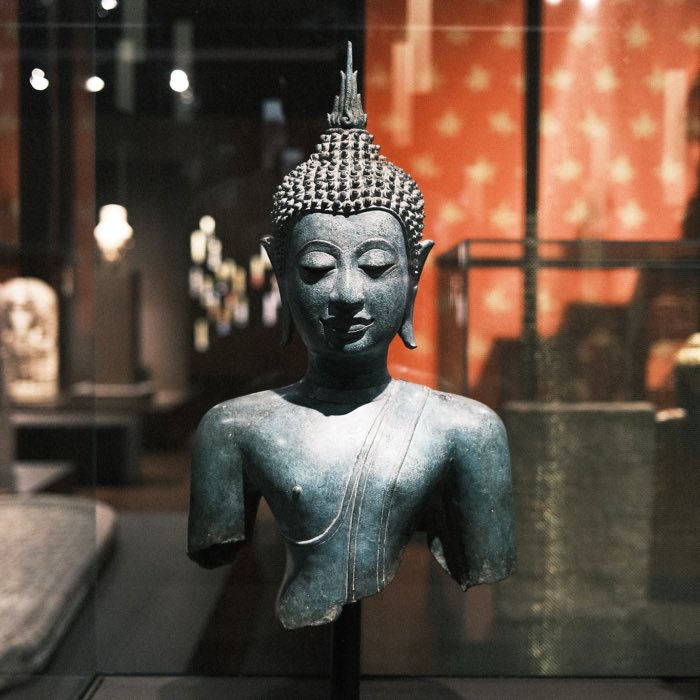
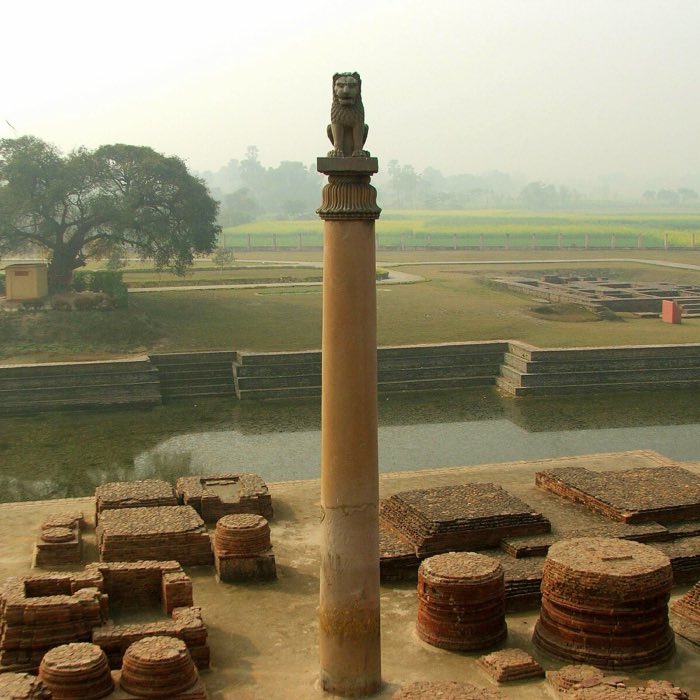
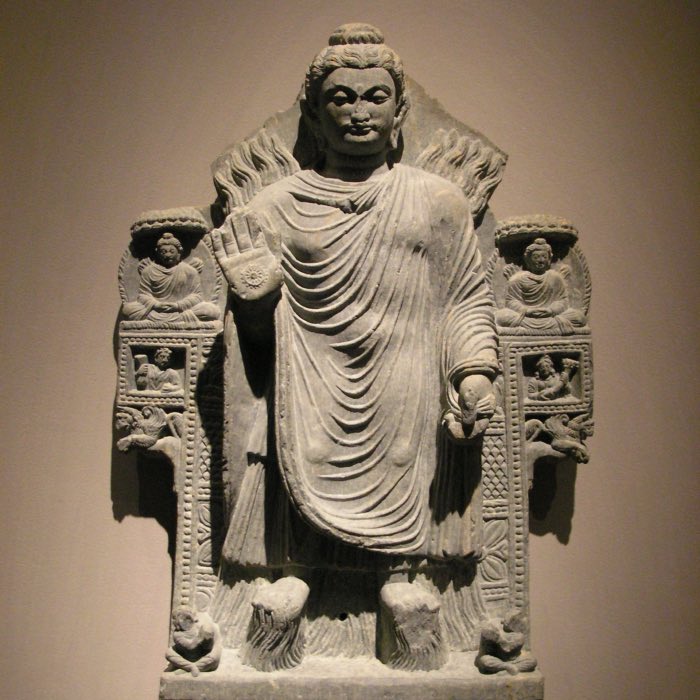
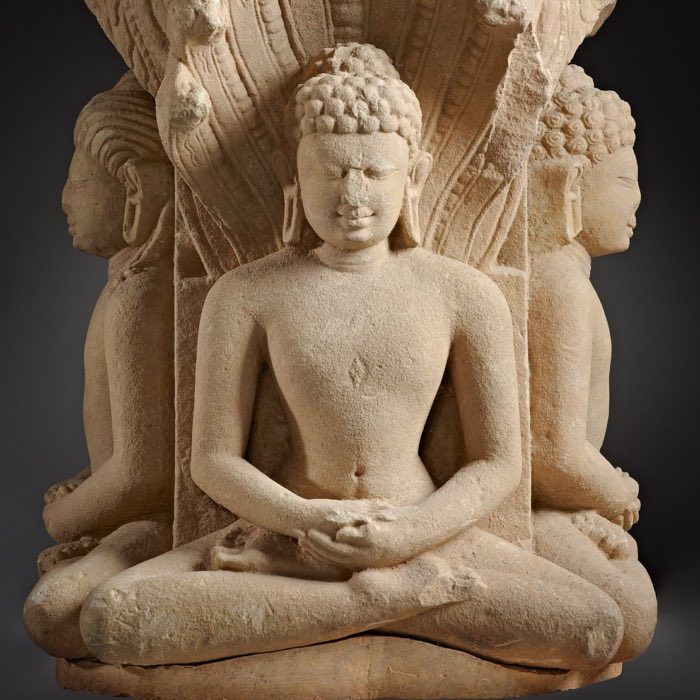
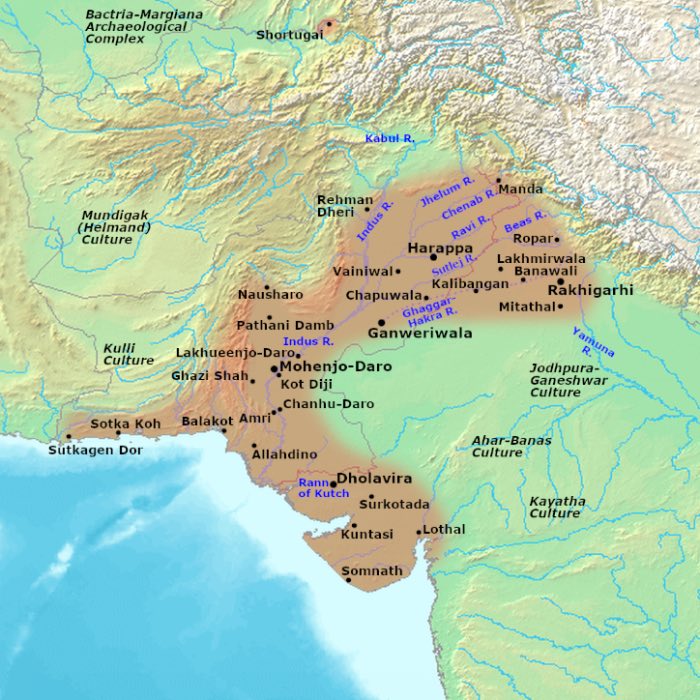
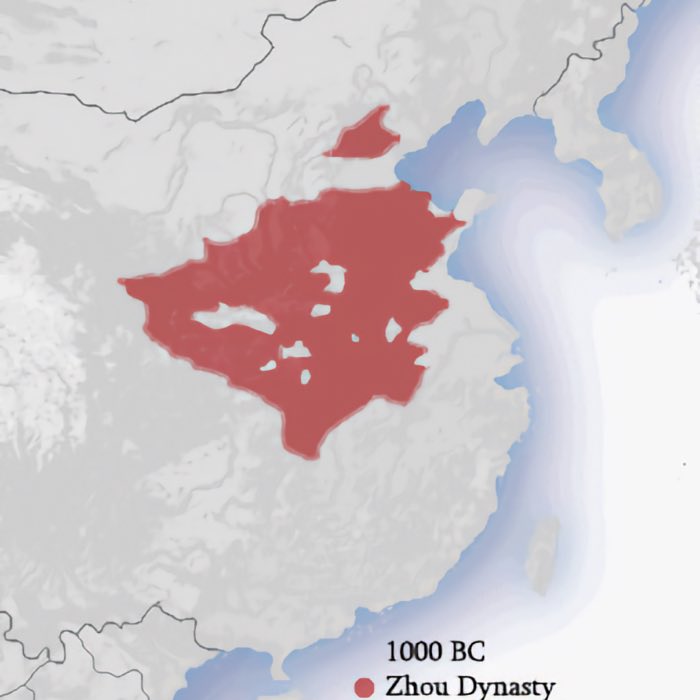
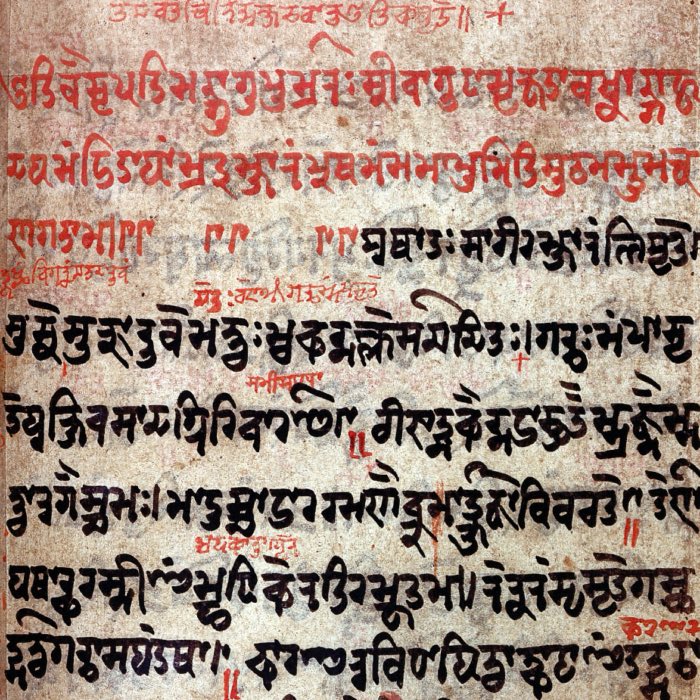
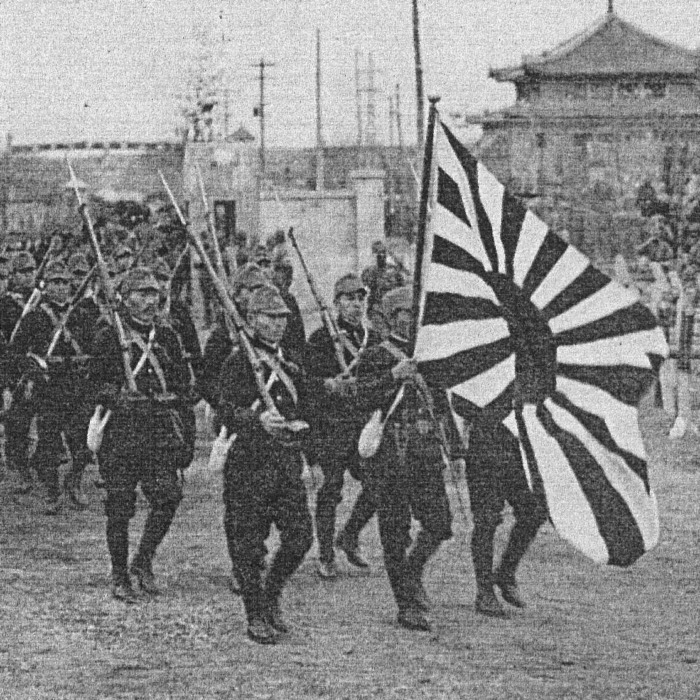
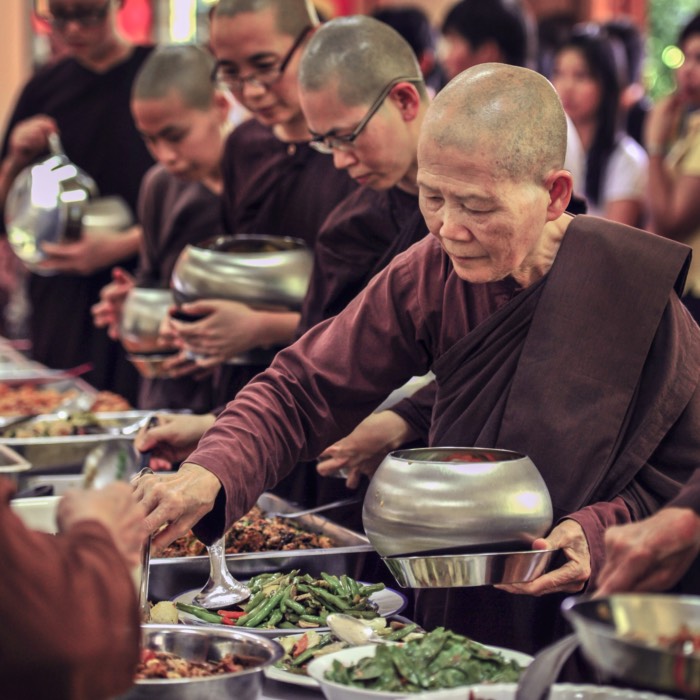
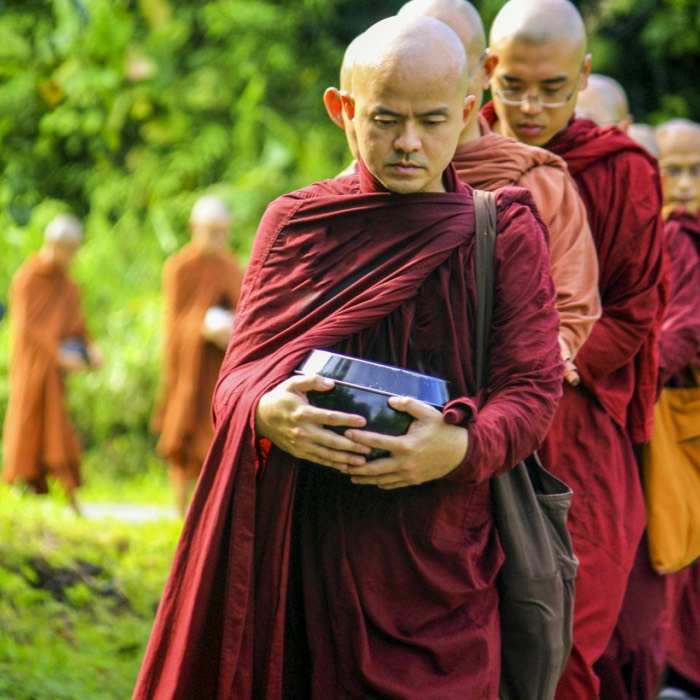
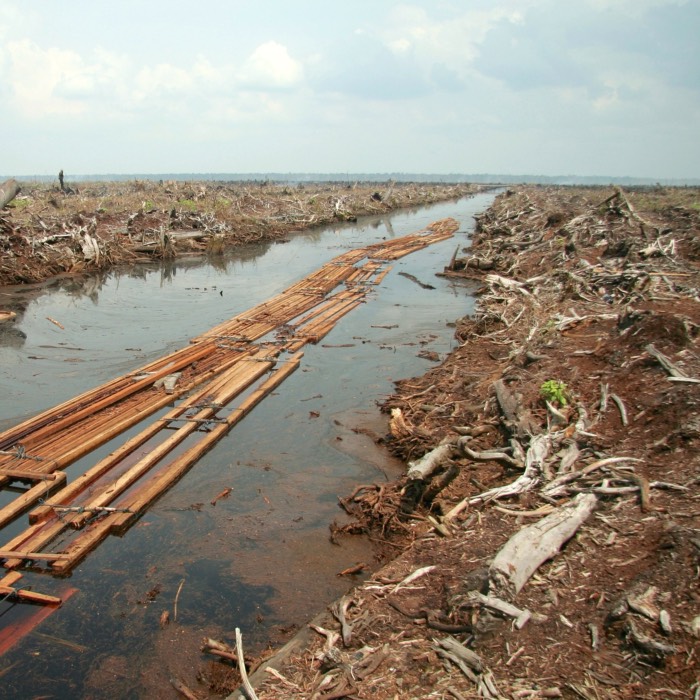


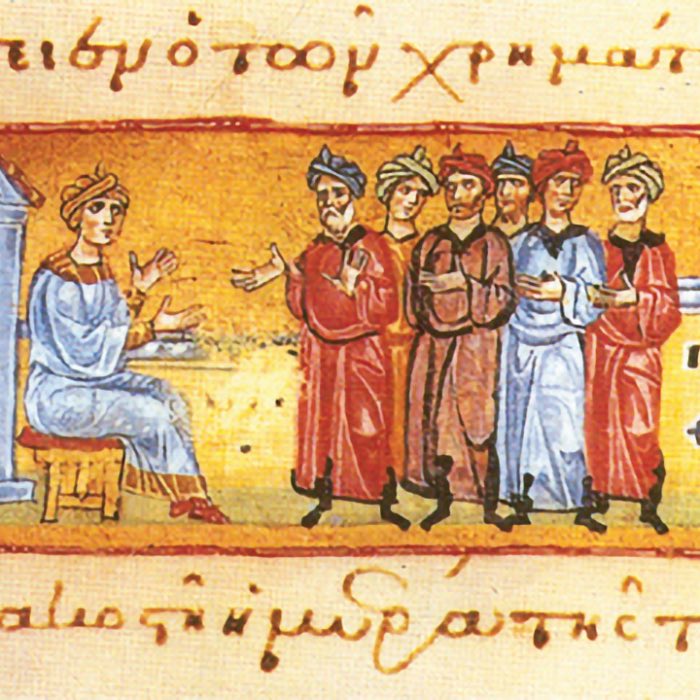
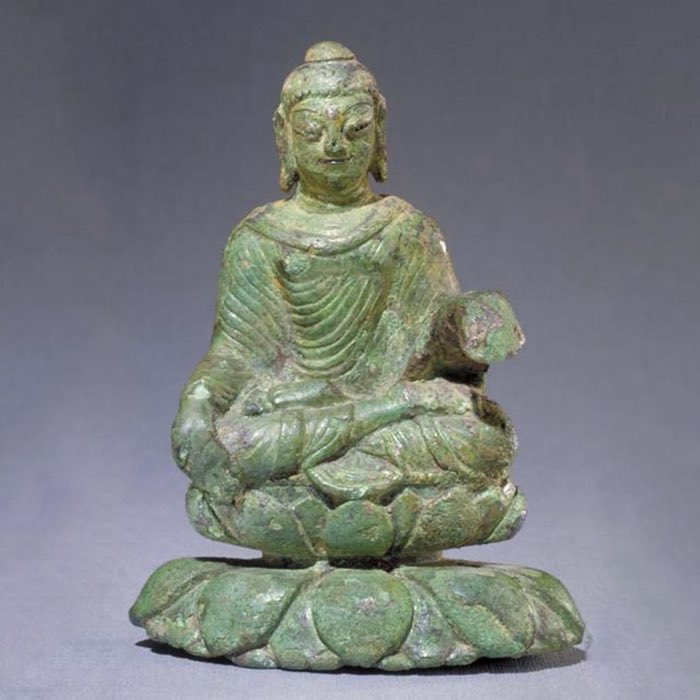
comments